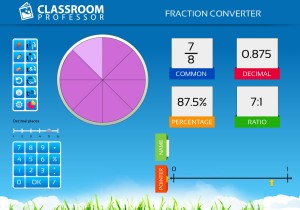And why most “educational” software doesn’t…
The trouble with most so-called “educational software” for teaching math is that is was designed by a programmer or a business owner, not an educator. As a result, it was designed to connect questions with answers really fast, in the mistaken belief that if you could just automate the testing of students on matching question and answer, they would learn faster and better.
Yeah, so what?
Trouble is, most of the math adults use in real problem solving involves figuring out what math is needed, finding the best tools to use, then applying them and evaluating the result. If the chosen tools do not produce a solution, then alternative pathways are tried, until the solution is reached.
Very little actual use of mathematics involves memorizing and single fact in response to a simple question, which is exactly what is targeted by most math software.
A New Pedagogy: Provide Tools to Support Thinking
Let me introduce a new set of interactive, cross-platform teaching and learning tools, which we call Professor Pete’s Gadgets.
Professor Pete’s Gadgets are designed to interactively support students’ development of mathematical thinking, by presenting them with symbols, pictures and words which they can manipulate to understand how they relate to each other. It is a fantastic teaching tool that, combined with well sequenced lessons and worksheets, allow students to understand the math concept.
For example, they can see how common fractions, percentages, decimal fractions and ratios relate to each other, what they look like in a pictorial form and where they sit on a number line between 0 and 1:

Professor Pete’s Gadgets: Fraction Converter
